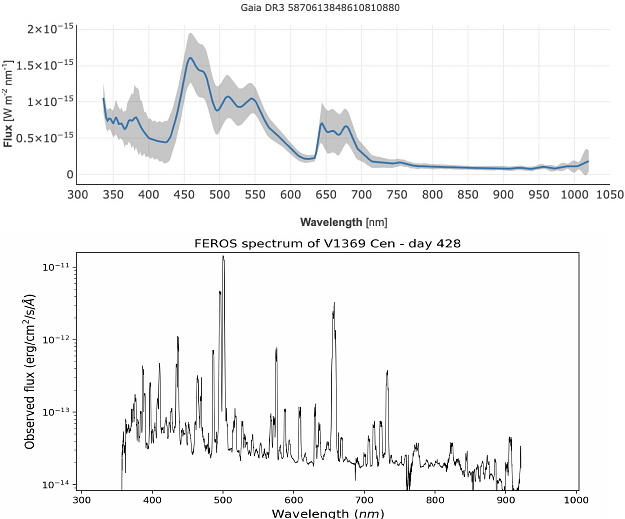Possible evidence for the 478 keV emission line from $^7$Be decay during the outburst phases of V1369 Cen

Possible evidence for the 478 keV emission line from $^7$Be decay during the outburst phases of V1369 Cen
L. Izzo, T. Siegert, P. Jean, P. Molaro, P. Bonifacio, M. Della Valle, T. Parsotan
AbstractAfter decades of uncertainty about the origin of lithium, recent evidence suggests Galactic novae as its main astrophysical source. In this work, we present possible evidence for the first detection of the $^7$Be line at 478 keV, observed with the INTEGRAL satellite. The emission is temporally and spatially coincident with the outburst of the bright nova V1369 Cen, and line significance ranges from 2.5$\sigma$ to $\sim$1.9$\sigma$, depending on the detection methodology. A bootstrap analysis, assuming a fixed FWHM of 8 keV, provides a flux of $(4.9 \pm 2.0) \times 10^{-4}$ ph/cm$^2$/s centered at 479.0 $\pm$ 2.5 keV, with a 2.5$\sigma$ significant excess. This flux implies a total $^7$Be mass of $M_{^7Be} = (1.2^{+2.0}_{-0.6})$ $\times 10^{-8}$ M$_{\odot}$ at the distance determined using several indicators including the {\em Gaia} satellite. For a nova ejected mass estimated from radio observations, this result implies a $^7$Be=Li yield corresponding to $A(Li) = 7.1^{+0.7}_{-0.3}$. This value is comparable to those measured in a dozen novae through optical observations. Crucially, we confirm optically derived $^7$Li yields and demonstrate the groundbreaking potential of using gamma-ray data to measure Li abundances.